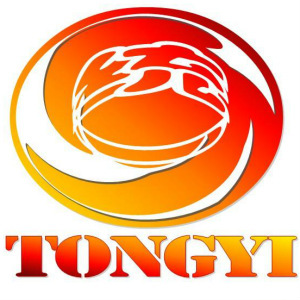MTRONPTI石英晶体常见问题解答PM2MM 20.000000
MTRONPTI石英晶体常见问题解答PM2MM 20.000000
MtronPTI提供广泛的精密频率和频谱控制解决方案,包括射频、微波和毫米波滤波器;空腔、晶体、陶瓷、集总元件(LC)和开关滤波器;高性能和高频OCXO、集成PLL OCXOs、TCXOs、VCXOs、石英晶振,低抖动和恶劣环境振荡器和时钟;晶体谐振器、集成微波组件(IMA)和最先进的固态功率放大器产品。MtronPTI是一家上市公司(纽约证券交易所代码:MPTI)。
1,问题:为什么晶体被指定有频率容差和稳定性,而振荡器只被指定有稳定性要求?
答:这个问题的答案在某种程度上是一个“特殊性”问题。通常假设在某种类型的石英晶体振荡器电路中使用晶体。用户将知道该振荡器的总稳定性,加上老化,在期望的工作温度下需要什么。例如,如果要求在0°至70°C的温度范围内,最大总允许频率偏差为100 ppm,包括老化,则他可以订购在室温(25°C)下具有50ppm公差和在工作温度下具有50nm稳定性的晶体。在这些情况下,温度稳定性是指室温下的频率。
对于振荡器,最终用户通常只关心整体稳定性,包括工作温度。在这种情况下,他可能会要求振荡器在0°至70°C的温度范围内需要100ppm的稳定性,包括老化,如MHO+13TAD。在实际制造过程中,晶体振荡器的结构与上述晶体基本相同。在产品的设计中考虑了振荡器电路效果的变化。振荡器内部使用的晶体在25°C时的初始容差为50 ppm。该晶体被设计为在操作温度下以特定的稳定性(50ppm)操作。当安装在振荡器中时,组合的总稳定性在100ppm的最大规格范围内。
2,问题:“老化”一词与晶体有关,是什么意思?
答:老化是晶体频率随时间的变化。衰老可以是积极的,也可以是消极的。老化影响会导致晶体所用振荡器的整体频率漂移。老化的原因有几个:晶体安装结构中的应力消除、内部污染、吸湿和石英材料的变化。这些情况中的一些可能是由于晶体暴露在冲击和振动水平下,或操作温度高于建议限值,或由于焊接或玻璃与金属密封退化而失去密封性。附着在晶体晶片上的颗粒污染物将导致晶体频率的负移。晶体质量或电子极材料的损失通常会在晶体的频率上表现出正偏移。为了减少晶体的老化,该单元需要在超清洁环境中制造,并密封在密封包装中。石英晶体可以在一定程度上“预老化”,以最大限度地减少老化的影响。由于老化特性往往遵循对数曲线,晶体的大部分老化将发生在其寿命的第一年。通过适当的加工,可以使晶体呈现出每年±0.5ppm至1771ppm范围内的老化特性。
3,问题:AT条形晶体和at圆形坯料或晶片晶体之间的主要区别是什么?
答:这两种晶体的明显区别在于它们的大小。AT圆形坯料,或平面型晶体,已经存在了50年,并用于许多HC-49/U(MP-1)型晶体。HC-49/U中使用的晶体的直径范围为0.200“至0.350”,具体取决于晶体的频率。由于大的表面积,圆形坯件可以具有相对大的电极。这对于需要具有宽可拉性的晶体来说是合乎需要的。此外电极和坯料尺寸通常表现出低ESR值。HC-49/U圆形空白晶体也适用于宽温度范围(-55°C至+125°C至+125°C),同时实现良好的稳定性。
对于许多圆形坯料设计,从0.1mW到2mW的驱动电平是可能的。圆形坯料的频率由其厚度和直径决定;频率越高,贴片晶振晶体坯料就越薄。正因为如此,高达约33MHZ的基频是可能的,但由于断裂而导致屈服损失。这些高频基础是脆弱的,如果受到极端的冲击和振动环境,最终用户很容易损坏。实际上,从大约1.8MHz到200MHz的任何频率都可以使用HC-49/U型晶体制成。
AT条形晶体已经存在了大约17年,并且是在日本开发的。大约90%的AT条形晶体生产在远东。AT条形晶体采用了一块小的矩形石英片,其尺寸仅为HC-49/U圆形坯料设计的一小部分。其长宽比和厚度决定了AT条形晶体的频率。由于表面积非常小,只有一个小电极可以连接到石英晶体带上。这种晶体和电极的尺寸也使得AT条形晶体不适合用于需要宽可拉性(±200ppm)的应用。AT条形晶体在给定频率下通常表现出比HC-49/U圆形坯料类型更高的ESR值。AT条形晶体的每个频率都是独特设计的。
这意味着并非在给定范围内的所有频率都经过设计开发。AT条形在3.579545MHz至200.00MHz范围内的特定频率下可用。使用AT条形晶体的主要优点与其尺寸有关。由于AT带材技术的进步,现在可以使用小到2.5x3.2x0.8mm的表面贴装贴片晶振。该技术的其他进步是提供改进的ESR、温度稳定性和更高的基频。因为AT条形晶体的质量比HC-49/U圆形坯料型晶体的质量小得多,所以它通常更适合高冲击和振动环境。它们的小尺寸也使它们成为小型封装表面安装振荡器的理想选择。
MTRONPTI石英晶体常见问题解答PM2MM 20.000000
Question: Why are crystals specified with a frequency tolerance and stability, while oscillators are specified only with a stability requirement?
Answer: The answer to this question is somewhat a “specmanship” issue. It is usually assumed that a crystal is used in some type of oscillator circuit. The user will know what the total stability of this oscillator, plus aging, needs to be over the desired operating temperature. For instance, if a requirement is for 100 ppm maximum total allowable frequency deviation, including aging, over the temperature range of 0° to 70°C, he could order a crystal that has 50 ppm tolerance at room temperature (25°C) and 50 ppm stability over the operating temperature. In these cases, the stability over temperature is referenced to what the frequency is at room temperature.
For Oscillators, the end user is usually only concerned with the total stability including over the operating temperature. In this case, he may request an oscillator that needs stability of 100 ppm, including aging, over the temperature of 0° to 70°C, like the MHO+13TAD. In the actual manufacturing process, the oscillator is built much the same as the crystal mentioned above. Variations for the effects of the oscillator circuitry are taken into account in the design of the product. The crystal used internal to the oscillator is built with an initial tolerance of 50 ppm at 25°C. The crystal is designed to operate at a specific stability (50 ppm) over the operating temperature. When mounted in the oscillator, the combined total stability is within the 100 ppm maximum specification.
Question: What is meant by the term “aging” as it pertains to crystals?
Answer:Aging is the change in frequency of a crystal over time. Aging can be in the positive or negative direction. Aging affects contribute to the overall frequency drift of the oscillator that the crystal is used in. There are several causes for aging: stress relief in the crystal’s mounting structure, internal contamination, moisture absorption, and changes in the quartz material. Some of these conditions can occur as a result of the crystal being exposed to shock and vibration levels, or operating temperatures above the recommended limits, or the loss of hermeticity due to weld or glass to metal seal deterioration. Particulate contamination, which attaches itself to the crystal wafer, will cause a negative shift in the crystal’s frequency. Loss of crystal mass or elctrode material will usually exhibit a positive shift in the crystal’s frequency. In order to reduce aging in a crystal, the unit needs to be manufactured in an ultra-clean environment, and sealed in a hermetic package. Crystals can be “pre-aged”, to a certain degree, to minimize the effects of aging. Because aging characteristics tend to follow a logarithmic curve, most of the aging of a crystal will occur in the first year of its life. With proper processing, a crystal can be made to exhibit aging characteristics in the ±0.5 ppm to 177, 1 ppm per year range.
Question: What are the main differences between at AT-strip crystal and an AT-round blank or wafer crystal?
Answer:The obvious difference between these two types of crystals is in their size. The AT round blank, or plano-plano type of crystal, has been around for 50 years and is used in many HC-49/U (MP-1) type crystals. The crystal used in an HC-49/U can have a diameter ranging from 0.200" to 0.350" depending on the frequency of the crystal. Because of the large surface area, the round blank can have a relatively large electrode. This is desirable for crystals that need to have wide pullability. Also, the larger electrode and blank size will usually exhibit low ESR values. The HC-49/U round blank crystals are also suitable for wide temperature range (-55°C to +125°5°C to +125°C) while achieving good stability.
Drive levels from 0.1 mW to 2 mW are possible with many round blank designs. The round blank’s frequency is determined by its thickness and diameter; the higher the frequency the thinner the crystal blank. Because of this, fundamental frequencies up to about 33 MHZ are possible, but with yield loss due to breakage. These high frequency fundamentals are fragile and can easily be damaged by the end user if subjected to extreme shock and vibration environments. Virtually any frequency from about 1.8 MHz to 200 MHz can be made using the HC-49/U type crystal.
The AT-strip crystal has been around for about 17 years, and was developed in Japan. About 90% of AT-strip crystal manufacturing is done in the Far East. The AT-strip crystal utilizes a small rectangular piece of quartz that is a fraction of the size of the HC-49/U round blank design. Its length to width ratio, and its thickness determine the frequency of the AT-strip crystal. Because of the very small amount of surface area, only a small electrode can be attached to the crystal strip. The size of this crystal, and the electrode, also make the AT-strip crystal undesirable for applications that require a wide pullability (±200 ppm). The AT-strip crystal typically exhibits higher ESR values for a given frequency than the HC-49/U round blank types. Each frequency for AT-strip crystals is uniquely designed. This means that not all frequencies in the given range are designed and developed. AT-strip crystals are available at specific frequencies in the 3.579545 MHz to 200.00 MHz range. The major advantages of using the AT-strip crystal are related to its size. Surface Mount crystals as small as 2.5 X 3.2 X 0.8 mm are now available because of advances in AT-strip technology. Other advances in this technology are providing improved ESR, temperature stability, and higher fundamental frequencies. Because the AT-strip crystal has considerably less mass than the HC-49/U round blank type crystal, it is often better suited for high shock and vibration environments. Their small sizes also make them ideal for use in small package surface mount oscillators.
| 晶振编码 | 型号 | 频率 | 包装 |
| M13252JM 24.000000 | M1325 | 24MHz | 3.2 x 5.0 mm |
| M13804MP 15.000000 | M1380 | 15MHz | 3.7 x 8.0 mm |
| M15322GZL 0.032768 | M1532 | 0.0328MHz | 1.5 x 3.2 mm |
| 375-01A-R .032768 | MMCC-2 | 0.0328MHz | 2.0 x 6.0 mm |
| PM2DF13 25.000000 | PM | 25MHz | 5.0 x 7.0 mm |
| PM2FM10 25.000000 | PM | 25MHz | 5.0 x 7.0 mm |
| PM2JM 10.000000 | PM | 10MHz | 5.0 x 7.0 mm |
| PM2MM 20.000000 | PM | 20MHz | 5.0 x 7.0 mm |
| PM3MM 11.059200 | PM | 11.0592MHz | 5.0 x 7.0 mm |
| PM3MM 24.000000 | PM | 24MHz | 5.0 x 7.0 mm |
| PM3MM 30.000000 | PM | 30MHz | 5.0 x 7.0 mm |
| PM4GM 25.000000 | PM | 25MHz | 5.0 x 7.0 mm |
| PM4JM 20.000000 | PM | 20MHz | 5.0 x 7.0 mm |
| PM4MM 27.000000 | PM | 27MHz | 5.0 x 7.0 mm |
| PP1GG 20.250000 | PP | 20.25MHz | 3.5 x 6.0 mm |
| PP1GG 24.576000 | PP | 24.576MHz | 3.5 x 6.0 mm |
| PP1GG 28.322000 | PP | 28.322MHz | 3.5 x 6.0 mm |
| PP2GG 27.000000 | PP | 27MHz | 3.5 x 6.0 mm |
| PP6GG 18.432000 | PP | 18.432MHz | 3.5 x 6.0 mm |
| PP6MM 28.636300 | PP | 28.6363MHz | 3.5 x 6.0 mm |
| M1001S025-R 3.686400 | ATSM-49-R | 3.6864MHz | HC-49S-SMD |
| M1001S066 25.000000 | ATSM-49-R | 25MHz | HC-49S-SMD |
| M1001S096 24.000000 | ATSM-49-R | 24MHz | HC-49S-SMD |
| M1001S097 30.000000 | ATSM-49-R | 30MHz | HC-49S-SMD |
| M1001S175-R 4.000000 | ATSM-49-R | 4MHz | HC-49S-SMD |
| M1001S182 25.000000 | ATSM-49-R | 25MHz | HC-49S-SMD |




 微信号
微信号


